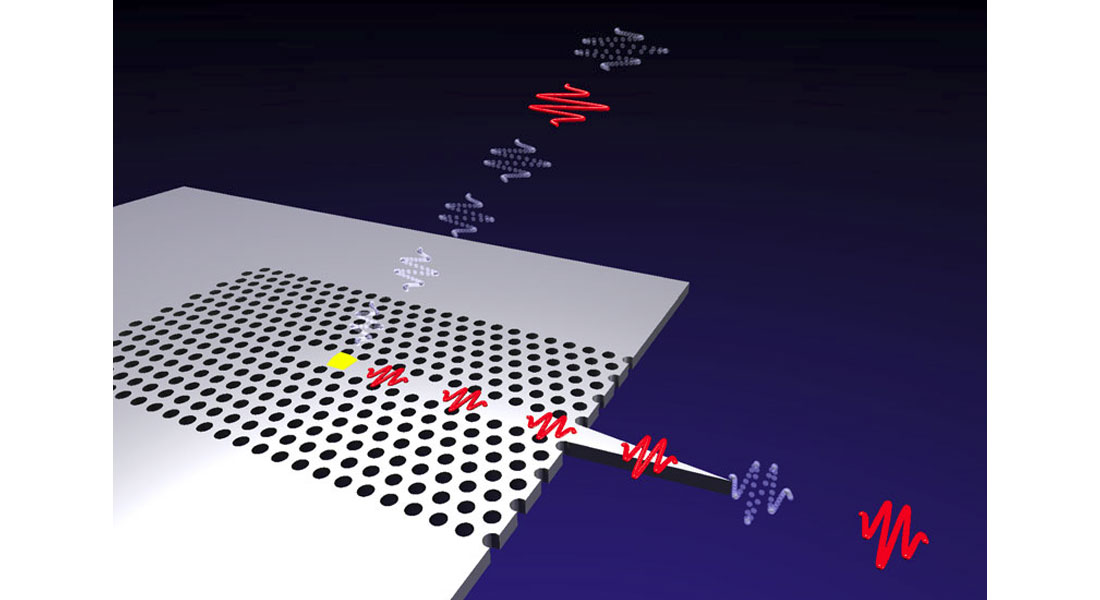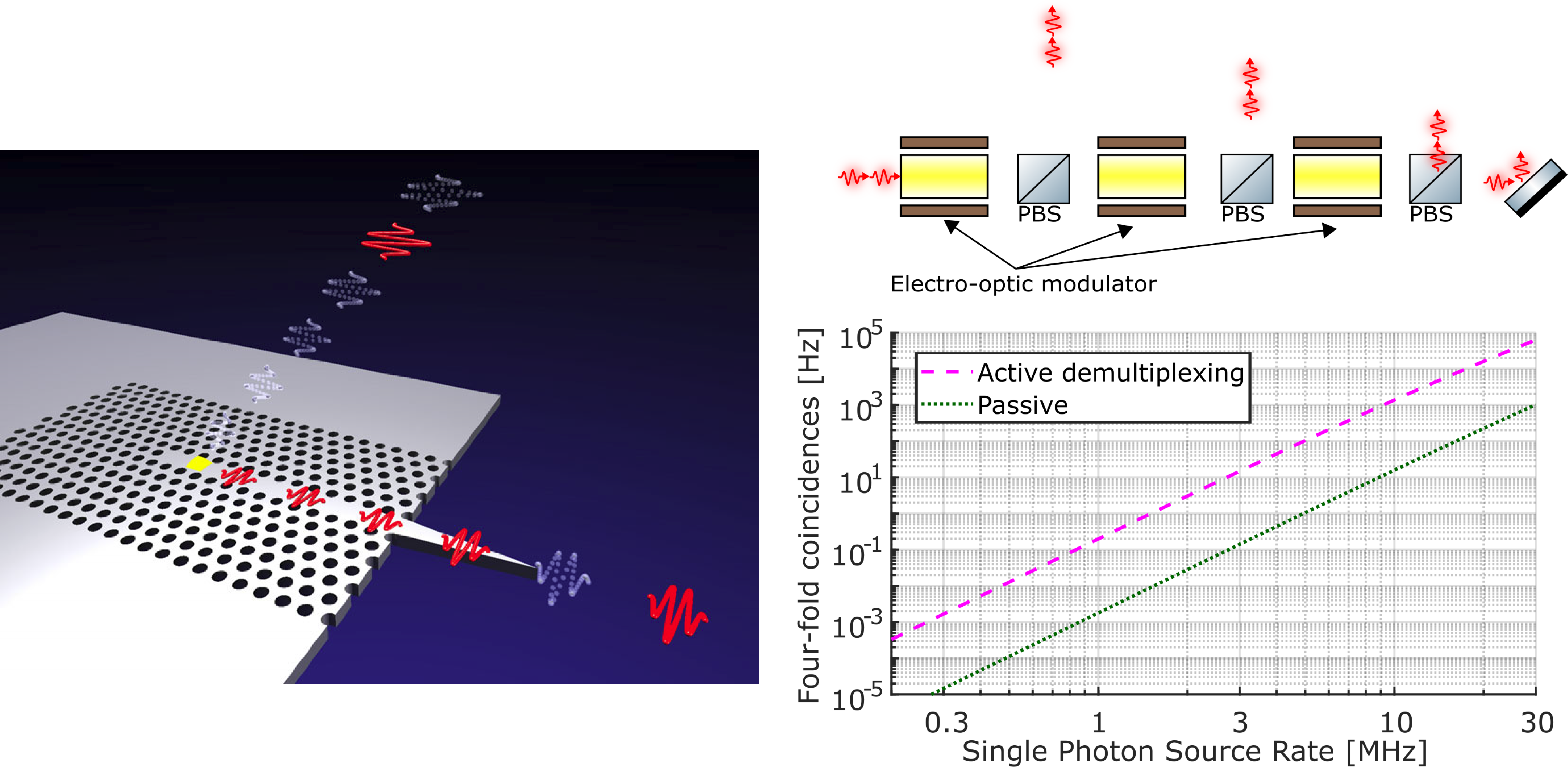Quantum information processes with coherent single-photon sources
enables communication and computation protocols that promise superior performance and security in comparison to the widely used classical methods. This promise has led to a widespread interest and a rapid surge towards realizing quantum technologies.

Among the variety of physical systems that are being explored, Quantum Photonics is a natural choice for communication due to the ease and robustness of encoding information onto photons. Working at this exciting juncture of time on state-of-art single photon sources, we are currently delving into device-independent quantum cryptography protocols for secure communication including random number generation (QRNG) and quantum key distribution (QKD).
The implementation of cryptography schemes requires entangled photon pairs or multiple single photon sources that can be used for heralded entanglement generation. We employ deterministic single-photon sources based on quantum dots interfaced with photonic nanostructures (Fig. 1a)
- [1]. Highly efficient extraction of single-photon emission from the photonic chip is possible by fabrication high-efficiency grating outcouplers or using fibre tapers
- [2,3]. Furthermore the fundamental decoherence processes are fully understood
- [4] and can be overcome
- [5]. Consequently near-ideal indistinguishable photons
- [6] and transform-limited emission lines
- [7] have recently been demonstrated. The deterministic single-photon sources can subsequently be demultiplexed by using low-loss electro-optic modulators (EOMs).
We achieve > 92% efficiency from the input to the output of the demultiplexer, cf. Fig. 1b. Combined with highly efficient superconducting nanowire single photon detectors (SNSPDs), we can now access high-rate multiphoton linear optic quantum protocols. As a first implementation of this scheme, we use a free-space optical setup to generate heralded polarization entangled pair using the demultiplexer.
The combination of the highly efficient source, network and detection may enable the physical realization of device-independent quantum cryptography schemes.

